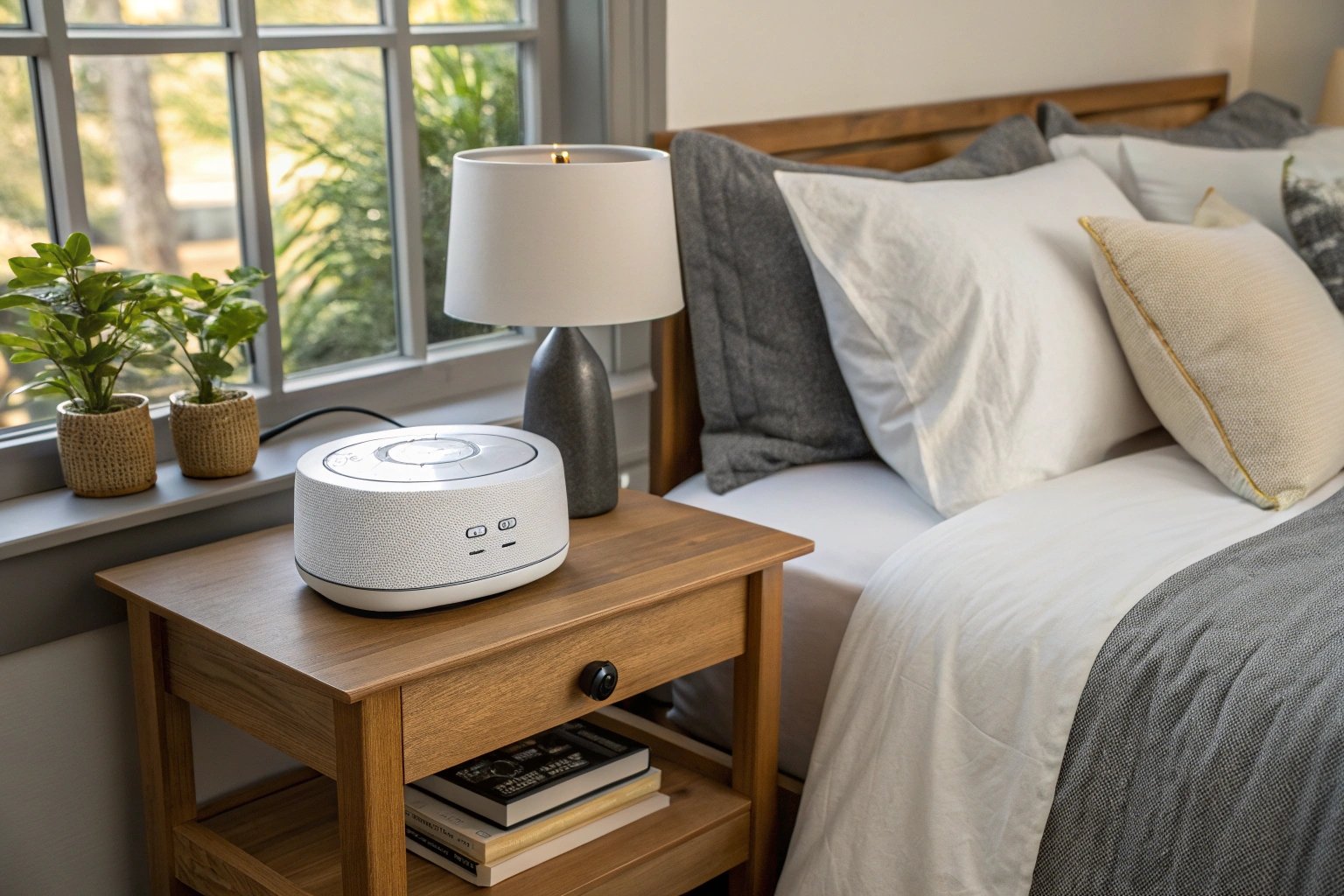Picking a white noise machine might seem simple, but the wrong choice can lead to frustration instead of better sleep or improved focus. Whether you're trying to sleep through city noise or concentrate in a busy office, the right machine can make a big difference. The key is to understand how different features work and which ones actually matter based on your needs.

What Kind of Sounds Help You Relax?

White noise machines vary greatly in the types of sounds they produce. Some stick to basic white, pink, or brown noise. Others include nature recordings like rainfall, ocean waves, or a crackling fire. What works for one person might be distracting for another. I’ve found that people who are easily disturbed by high-pitched sounds often prefer brown noise because it’s deeper and softer. On the other hand, some prefer the predictability of pure white noise because it’s uniform and consistent.
Understanding your own preferences is essential. Try using sound samples online before you decide. Some machines even offer downloadable libraries so you can update or expand the sounds after purchase.
How Does Volume and Speaker Quality Affect Your Experience?
Volume range is often overlooked, but it's crucial. A machine that can’t go loud enough won’t be effective in a noisy space. But too loud can cause ear fatigue or even disrupt sleep. Look for models that maintain sound quality at both low and high volumes. Machines with poor speakers often distort at higher settings or hiss at lower ones.
You should also consider where and how you’ll use the machine. If it’s for a baby’s room, the volume should be soft and consistent. In a shared office, it may need to be louder but not sharp or irritating.
What Features Actually Make a Difference?

Some features are nice to have, while others can actually impact your comfort and experience. Here are a few to keep in mind:
- Timer settings let you set the machine to turn off automatically—great for those who don’t want sound playing all night.
- Looping or seamless playback avoids the annoying pattern repetition that can disturb light sleepers.
- Portability is important if you plan to travel or move the machine between rooms.
- Battery or USB power options add flexibility, especially in places where outlets are limited.
Many people think they need every feature, but I always recommend focusing on two or three that matter most to your lifestyle.
How Does Machine Placement Affect Results?

Where you place the machine can greatly influence its performance. In a bedroom, positioning it between your bed and the source of noise—like a window or hallway—helps block the sound more effectively. Avoid placing the device right next to your head or ear. A good distance is usually two to three feet from where you sleep or work.
If you’re using it in a shared space, like a living room or office, consider placing it at ear level, either on a shelf or desk, so the sound spreads evenly throughout the room. Placement isn’t just about where it fits—it’s about how the sound reaches your ears.
Conclusion: What Should You Focus On When Choosing?
Choosing the right white noise machine comes down to your personal environment and preferences. Focus on the sound types you enjoy, check the speaker quality, and only invest in the features you’ll actually use. A good machine blends into your routine, supports your rest or focus, and stays reliable over time.

